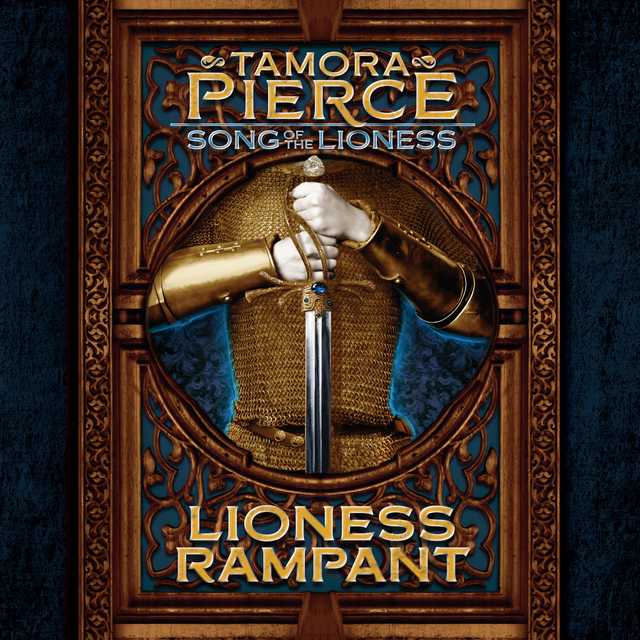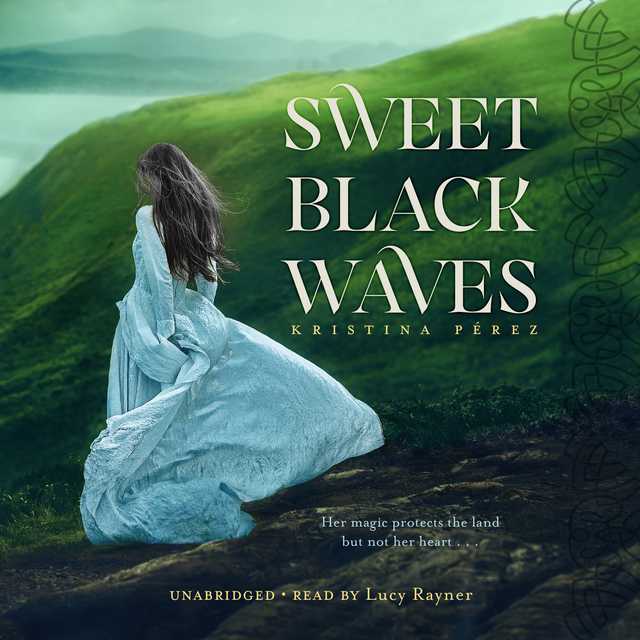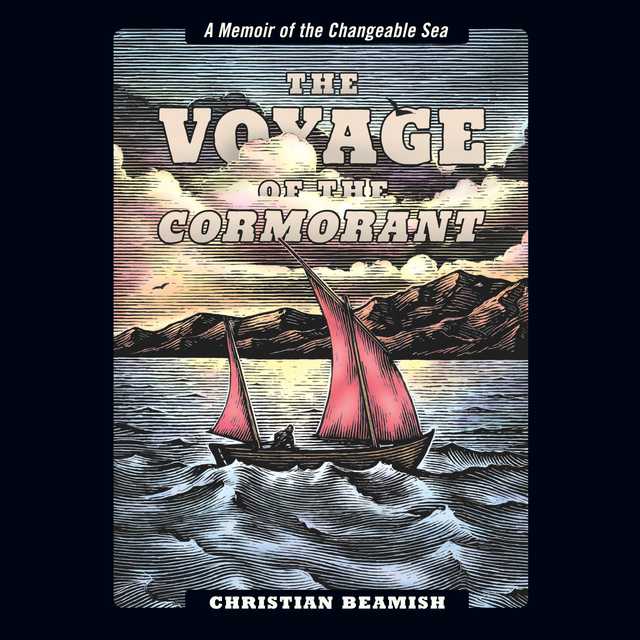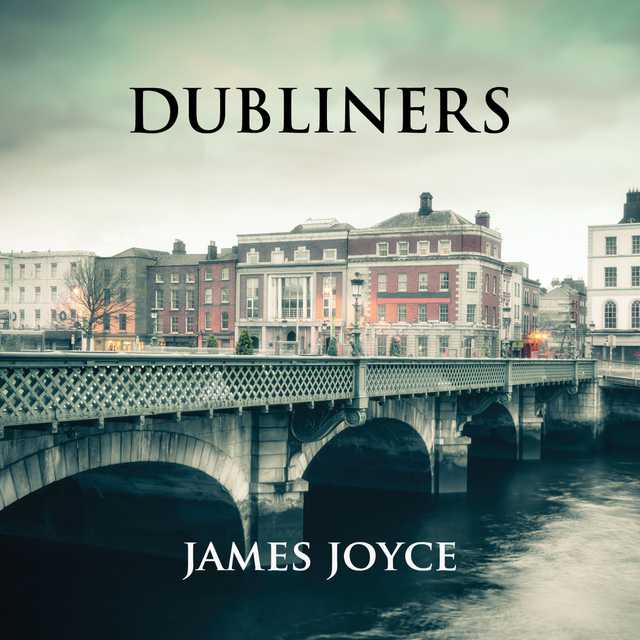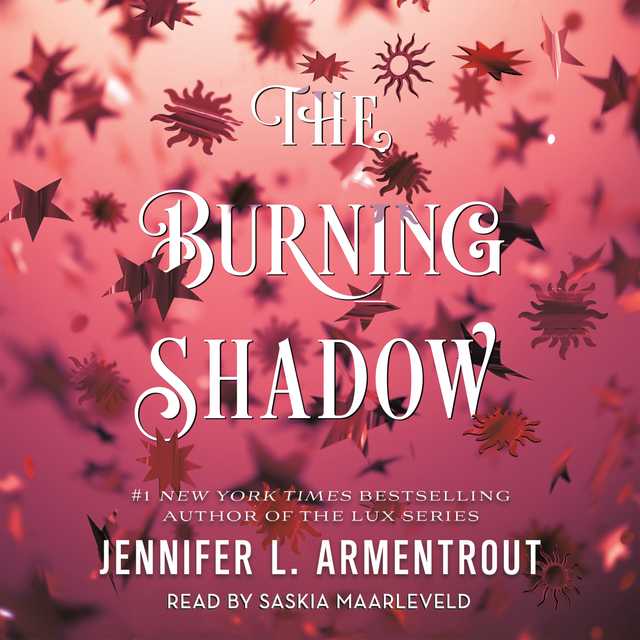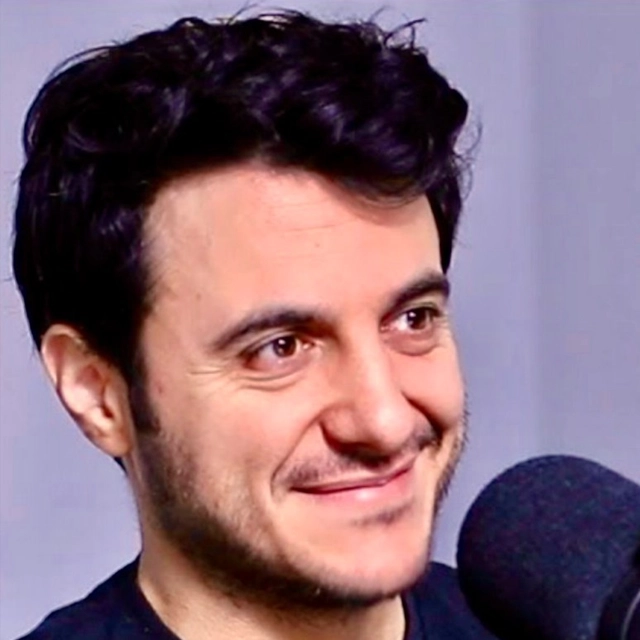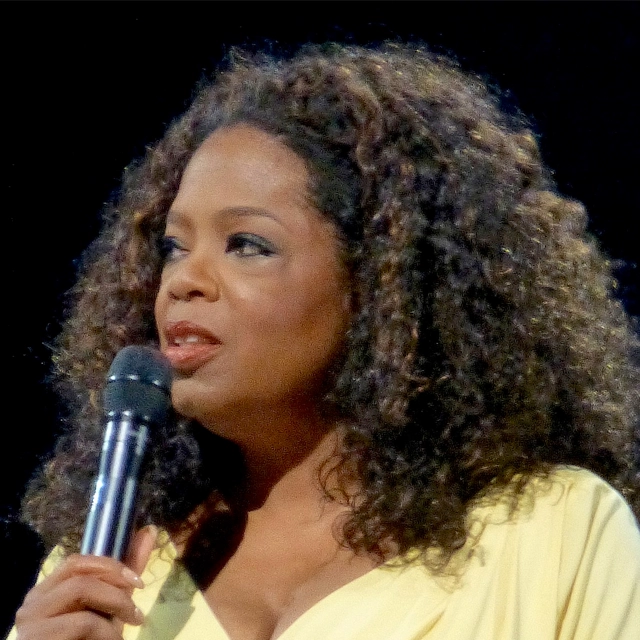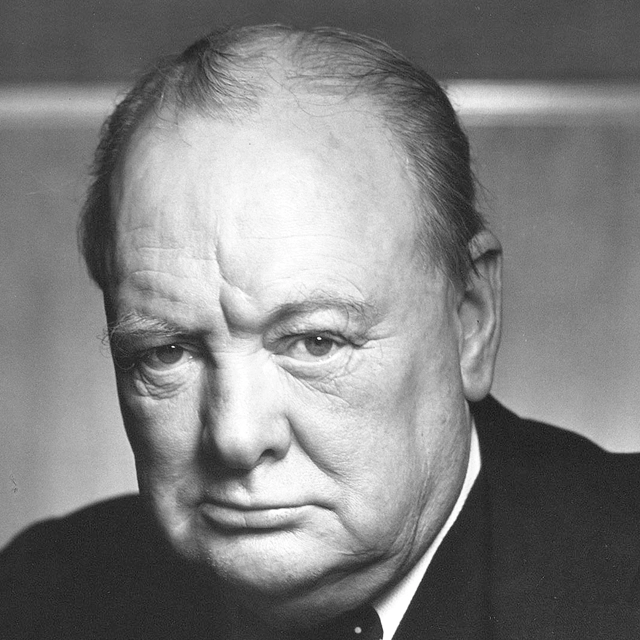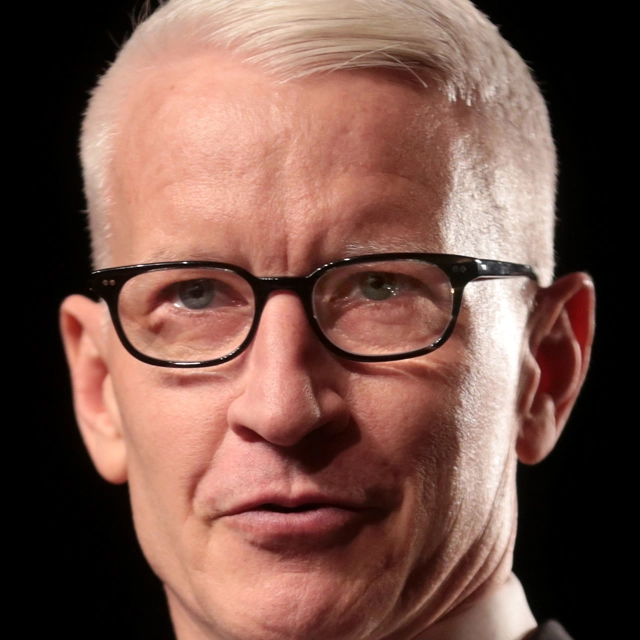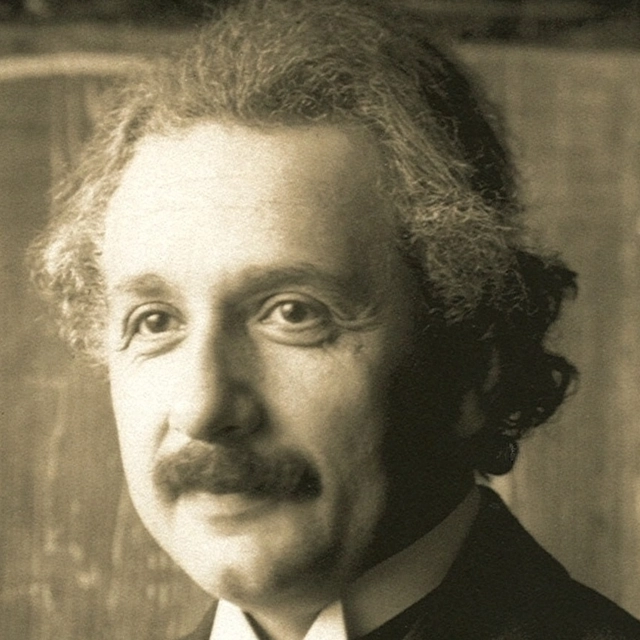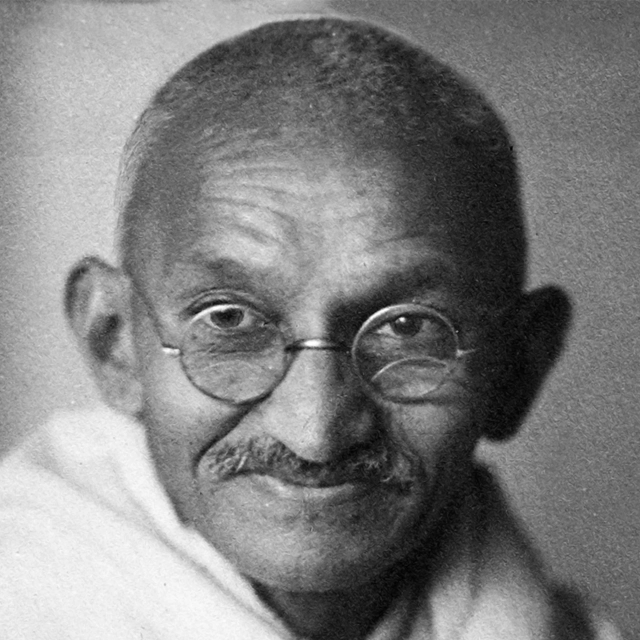1421 Audiobook Summary
On March 8, 1421, the largest fleet the world had ever seen set sail from China. Its mission was “to proceed all the way to the ends of the earth to collect tribute from the barbarians beyond the seas” and unite the whole world in Confucian harmony.
When it returned in October 1423, the emperor had fallen, leaving China in political and economic chaos. The great ships were left to rot at their moorings and the records of their journeys were destroyed. Lost in China’s long, self-imposed isolation that followed was the knowledge that Chinese ships had reached America seventy years before Columbus and had circumnavigated the globe a century before Magellan. Also concealed was how the Chinese colonized America before the Europeans and transplanted in America and other countries the principal economic crops that have fed and clothed the world.
Unveiling incontrovertible evidence of these astonishing voyages, 1421 rewrites our understanding of history. Our knowledge of world exploration as it has been commonly accepted for centuries must now be reconceived due to this landmark work of historical investigation.
Other Top Audiobooks
1421 Audiobook Narrator
Simon Vance is the narrator of 1421 audiobook that was written by Gavin Menzies
Gavin Menzies (1937-2020) was the bestselling author of 1421: The Year China Discovered America; 1434: The Year a Magnificent Chinese Fleet Sailed to Italy and Ignited the Renaissance; and The Lost Empire of Atlantis: History’s Greatest Mystery Revealed. He served in the Royal Navy between 1953 and 1970. His knowledge of seafaring and navigation sparked his interest in the epic voyages of Chinese admiral Zheng He.
About the Author(s) of 1421
Gavin Menzies is the author of 1421
More From the Same
- Author : Gavin Menzies
- Who Discovered America?
- The Lost Empire of Atlantis
- 1434
- The Lost Empire of Atlantis
- Publisher : HarperAudio
- Abraham
- American Gods [TV Tie-In]
- Dead Ringer
- House of Sand and Fog
- Prey
1421 Full Details
| Narrator | Simon Vance |
| Length | 12 hours 59 minutes |
| Author | Gavin Menzies |
| Category | |
| Publisher | HarperAudio |
| Release date | January 28, 2014 |
| ISBN | 9780062343680 |
Additional info
The publisher of the 1421 is HarperAudio. The imprint is HarperAudio. It is supplied by HarperAudio. The ISBN-13 is 9780062343680.
Global Availability
This book is only available in the United States.
Goodreads Reviews
Brian
August 23, 2007
First off, I will start off by saying that I do NOT believe the Chinese beat the Europeans to the New World. I just think the evidence just is not compelling enough. However that doesn't mean that they could NOT have. They certainly had the navy, the navigational skills (no worse than the Europeans), and the funding and ingenuity to accomplish it. And that is precisely what this book seeks to theorize. Of course there is not any historian that wants to make any money "theorizing" unless you are stictly in the academic community. In which case you then are not making any money. But I digress. Gavin Menzies has decided to theorize that the Chinese could and did in fact do exactly what the title promises. He makes a compelling case and this book is very readible to the amateur history buff. Which is why it gets 4 stars. You will read and really think that maybe the textbooks have been wrong the whole time. But like any good, compelling history, the reader should now get enough information and go find out for themselves what is really believable. Especially with a theory like this one that would literally turn history on its head. And after doing some further reading, you realize that Mr. Menzies simply does not have enough solid data to support this claim. But the book is well written and he makes a compelling case. Just not a slam dunk nor anything close. But fun to think about nonetheless.
Yigal
May 12, 2019
great book about the discoveries the Chinese made of the new world and other places like Tasmania long before Columbus sailed looking for the new route to India. great tale.
Darrell
March 13, 2008
In 1421: The Year China Discovered America, Gavin Menzies presents evidence that China not only discovered North and South America before Columbus was born, but also rounded the Cape of Good Hope, explored the North and South Poles, discovered Australia, and circumnavigated the world, visiting every continent except Europe.The reason this information isn't widely known is because China became xenophobic after these great voyages and all records of the voyages were destroyed. However, enough evidence of these voyages remains to provide compelling proof.Menzies focuses on maps of the world made before the European explores were born and points to journals showing that Columbus, Magellan, Cook, and others had maps of the areas they were "discovering" before they ever set sail.Magellan knew where the Straight of Magellan was by using a map. Cook found Australia the same way. Columbus didn't discover America on accident; he simply followed the map he brought with him. In fact, when Columbus landed on Puerto Rico, he found an earlier Portuguese voyage had already settled there ahead of him. (The Portuguese landed in Puerto Rico a short ten years after the Chinese.) Columbus wasn't even the first non-Scandinavian European to visit America! Also, Columbus himself admits that the Chinese had been to America before him.Where did these maps come from? Menzies shows that Europeans who visited India came into contact with the Chinese and brought maps back to Europe. Portugal kept the maps a secret from the rest of Europe to give them an advantage in the spice trade. However, Columbus and his brother copied the maps, altered them to make it look like it was easier to reach the Spice Islands by going west rather than east and tricked Spain into financing a voyage to the Americas.Menzies also presents a mountain of evidence of Chinese explorations around the world including Chinese stone markers and observation pyramids, ancient Chinese shipwrecks, including one found in San Francisco Bay, Chinese artifacts found around the world, Asian plants and animals introduced to the Americas, American plants and animals brought back to China, legends and cave drawings of indigenous peoples, and Native Americans with Chinese DNA who speak languages similar to Chinese.In addition to presenting compelling evidence, Menzies also provides interesting historical tidbits. For example, the Chinese had trained otters who herded fish into nets. He provides fascinating descriptions of medieval China, which made me wish the grade school history classes I took didn't focus solely on Europe and European America.The only problem I had with the book is that it gets repetitious towards the end, especially the epilogue that I found unnecessary since it just restates evidence from earlier in the book. Strangely, he includes an appendix explaining how the Chinese measured longitude, which is almost exactly the same word for word as his description of how the Chinese measured longitude found in Chapter 15, making it completely extraneous. Except for this one shortcoming, the book is a fantastic read and gives us indisputable proof that our history books need to be rewritten.
jerome
December 16, 2009
There are some books that come to our attention through curious routes and then strike us as books "we were meant to read." I suppose in some ways, this is true for many books. Perhaps it is proof of the old saying, "Chance favors the prepared mind." When my GoogleLitTrips.com project was selected by the Asia Society to receive the Goldman Sachs Foundation Prize for Excellence in Education, I was invited to New York City to receive the prize and there, in passing, it was suggested that 1421 might be a good book to do a Lit Trip on. Though I found the book a bit outside of the parameters of the Lit Trip project, I found it eye-opening to say the least. I had forever been aware of the "controversy" relating to the claims that Christopher Columbus "discovered" the new world. It had long been in my cognizance that the Vikings had been to the Americas earlier. And, of course, how can one claim to have discovered a land when the land one "discovers" is inhabited by millions of people with clear signs of advanced civilization?I had also only recently become aware of the extent of the Portuguese sailing history, suggesting that Columbus was following fairly well-known routes that the Portuguese were well aware of.But, this book, which offers extensive evidence that the Chinese were sailing the entire world long before either the Portuguese or Columbus was essentially complete news to me. One beauty of the book for me is it's support for my serious belief in photographer Aaron Siskind's quote which I had posted above my black, then, green, then white board in my classroom for over 30 years. It was Siskind who said, "We look at the world and see what we have learned to believe is there."I love this book because it verifies that what we know, or what we believe we know about history (and perhaps everything else) quite possibly is sufficiently less than what there is to know and therefore an indicator that we ought to always make room for the possibility that a complete reality check may always be in order.Was it coincidence then that through virtually no pre-planning or awareness on my part, that in traveling to New York to receive my prize, that "coincidentally" a friend of mine from the Apple Distinguished Educator group would "happen" to be invited to attend the ceremony, not knowing that I was to be one of the recipients? And that he would because of this "coincidence" invite me to join him in presenting at a conference in China on 21st Century Learning? And, that, I would then use part of the prize money to fund my attendance where I would find ample evidence of the stories of 1421 to be documented in multiple museums?It is true and always refreshing to be reminded that "The more we know, the more we come to understand how little we know." Great book!
Jason
July 30, 2008
(Reprinted from the Chicago Center for Literature and Photography [cclapcenter.com]. I am the original author of this review, as well as the owner of CCLaP; it is not being reprinted here illegally.)We Westerners are of course familiar with the historical period known as the Renaissance; taking place between the 1300s and 1600s, it's the period when Europeans finally crawled out of their Dark-Age hole, rediscovered such ancient Greek concepts as science and philosophy, and started doing such things for the first time as sailing to the far corners of the planet. But did you know that China as well went through its own brief Renaissance at the same time, actually sailing around the planet on a regular basis a full 50 years before the Europeans started doing so, and that it was the maps and tips these Chinese gave to the Europeans that allowed the great figures from the "Age of Discovery" to make their voyages in the first place? Well, okay, so not everyone completely agrees with this theory; but it's the surprisingly strong one being espoused in the books 1421: The Year China Discovered America and 1434: The Year a Magnificent Chinese Fleet Sailed to Italy and Ignited the Renaissance, both of them by a retired British naval commander named Gavin Menzies, a hobbyist scholar who just happened to start stumbling across more and more evidence during his studies to support the theory mentioned above. See, the whole thing is problematic, because the Chinese actually went through a major period of isolationism right after this brief period of world-traveling, specifically as a overreaction to Ghengis Khan and his Mongol Hoard Horde(!), which had actually held and ruled China all the way up to the beginning of the 1400s, or in other words the beginning of the Ming Dynasty in that country. According to well-known history, the Chinese were so set on turning inwards at this point, they actually destroyed most of their own records regarding their globetrotting sea voyages from this period, just so no one else would be tempted to make such trips again; according to Menzies, he has slowly been putting the pieces back together through shreds of evidence in other countries, stone markers and rescued scrolls and the like, revealing that the Ming Dynasty's own period of global seafaring was actually much larger than any of us have ever realized, a systematic series of successes that would've virtually guaranteed China's eventual world domination, if they had simply stuck with it instead of embarking on a four-hundred-year period of profound isolationism like they actually did. It's certainly an intriguing theory, and Menzies does a pretty credible job backing it up; these are giant thick books we're talking about (over a thousand pages altogether), just chock-full of evidence both direct and circumstantial. Combine this, then, with Menzies' tech-savvy prose concerning the problems of map-drawing and chart-creating in that period, which is why certain documents from that period need to be widened or narrowed in Photoshop before they'll actually line up with real coastlines; it's just one of the dozens of little issues and problems with all this old evidence, he argues, that prevented it from being all added together by anyone else before now. (See, one of the things Menzies did while in the navy was actually sail the ancient Chinese routes talked about in these books; he therefore has an expert's understanding on what these routes must've been like for the original Chinese sailors, and can thus explain the inconsistencies in the maps and charts they left behind.)These were great reads, books that really crank the gears of the mind into action (why, just the descriptions of a glittering, wealthy Southeast Asia in the 1400s is worth the cover price alone); I'll warn you, though, that these are denser books than the usual airport and beach reads, not exactly academic in complexity but definitely stories you need to pay careful attention to while reading. That said, they both get a big recommendation from me, especially for the growing amount of people in the western half of the world who are becoming more and more curious these days about the mysterious history of the eastern half.Out of 10: 9.3
Thom
January 06, 2014
From the moment I saw this book in the store I was fascinated. When I brought it home I had already made a mental plan as to when I would read this book. I was reading two books at the time and decided to put it third in line. As I read the other books I found that my mind was wandering and I was having trouble concentrating. 1421 was in my mind, 1421 was in my blood, I was hooked. I deserted the two books I had been reading and dedicated myself to this new quest. Historians place their faith in a premise that certain facts are above suspicion and can be accepted as truth. One of these assertions is that Christopher Columbus discovered the New World in 1492. What if historians were wrong? What if a fleet of Chinese ships made the discovery 71 years earlier and this fact was deliberately deleted from the annals of history? Everyone has heard of the wonders produced during the Ming Dynasty so why couldn’t these great rulers muster the men and ships to undertake a sea voyage of world exploration? Gavin Menzies spins a believable yarn, introducing obscure facts and figures to hypothesis.
Jonathan-David
March 28, 2015
A fascinating book. Simply put, in the 15th century China discovered North America, South America, Australia, New Zealand, Greenland, Hawaii, The South Pole, The North Pole, and some other smaller places (i.e. everywhere) before Europeans did, and when Europeans later "discovered" the same areas they did it using Chinese maps. The author says he has tons of evidence to back up his claims, including Chinese DNA spread all around the world, maps saying so, Chinese artifacts scattered hither and yon, and sunken Chinese ships probably right under your feet (please check, for science). After reading this book, I did a little more reading about it, and other people say the author has no evidence to back up his claims. Obviously I cannot independently verify either his claims or their claims about his claims, but I find the idea of medieval China's enormous fleets (800+ ships each several hundred feet long) sailing and colonizing the globe very appealing, and so I will now partially believe it.
Shira
August 09, 2018
Wow. The preponderance of evidence not only turns accepted European history and world history on its head, but also makes one wonder about the question the author poses as to whether or not we could be speaking Chinese now, rather than English, and have Buddhism as the dominant world religion, as well as my own personal question : did someone perhaps decide that the world was better off allowing Europe to take another three centuries to figure out what the Chinese already knew?Given the cruelty of the conquests we saw by the Europeans, versus the kindness with which visited populations were treated by the Chinese fleet, it seems safe to predict that history might have turned out quite differently for the human race had that information of how to navigate the world remained in benevolent hands.
htanzil
April 20, 2009
Sang Kaisar telah memerintahkan kami [Cheng Ho:] dan lainnya [Zhao Man, Hong Bao, Zhou Wen, dam Yan Qing:] di depan puluhan ribu pejabat dan tentara kekaisaran untuk melakukan perjalanan menggunakan lebih dari seratus kapal…untuk memperlakukan orang-orang asing dengan baik … Kami telah pergi ke wilayah-wilayah barat … total semuanya lebih dari tiga ribu negara besar dan kecil. Kami telah melewati lebih dari seratus ribu li (empat puluh mil laut) perairan luas.- Prasasasti Cheng Ho di muara Yangtzhe – China –Sejarah eksplorasi dunia mencatat bahwa pelaut-pelaut Eropalah yang menemukan dunia baru. Kisah perjalanan mereka selalu dikenang, dimulai dari Bartolomeu Diaz (1450-1500) yang meninggalkan Portugal pada tahun 1487 dan menjadi orang pertama yang mengelilingi Tanjung Harapan di ujung Selatan Afrika. Vasco Da Gama (1469-1525) mengikuti jalur Diaz sepuluh tahun kemudian. Ia mengarungi lautan timur Afrika dan menyeberang Samudera Hindia menuju India, membuka jalur perdagangan rempah-rempah melalui laut. Dan yang paling populer, Christopher Columbus (1451-1506), sejarah mencatat bahwa dialah orang yang pertama melihat Dunia Baru – Benua Amerika. Lalu mucullah Ferdinand Magellan (1480-1521) mengikuti jejak Columbus dan dikenal karena menemukan selat antara lautan Atlantik dan Pasifik yang kemudian dikenal dengan selat Magellan.Lima belas tahun yang lalu, Gavin Manzies (69 thn), mantan perwira Angkatan Laut Kerajaan Inggris tengah melakukan riset mengenai sejarah abad pertengahan. Secara kebetulan ia mendapati sebuah hasil temuan yang sangat mengagumkan, sebuah petunjuk tersembunyi di dalam sebuah peta kuno. Peta tersebut bertuliskan tahun 1424 dan ditandatangani oleh seorang pembuat peta dari Venezia bernama Zuane Pizzigano. Peta tersebut memperlihatkan beberapa buah pulau yang baru saja ditemukan oleh pembuatnya yang ternyata merupakan pulau-pulau di kepulaun Karibia, Puerto Rico dan Guedepole. Hal ini mengejutkannya karena berarti seseorang telah menjelajah kepulauan tersebut sekitar tujuh puluh tahun sebelum Columbus singgah di Karibia. Ini temuan baru, sebelum Columbus sudah ada yang terlebih dahulu menemukan Dunia Baru. Siapa yang melakukan pernjelajahan sebelum Columbus ? Berdasarkan riset awalnya terhadap peta tersebut, Mandiez mengambil satu kesimpulan awal bahwa saat itu hanya satu negara dengan segala perlengkapan dan pengetahuannya ilmiah yang tinggi yang dapat melakukan penjelahan tersebut. Negara tersebut adalah China.Mandiez tak berhenti dengan meneliti peta Pizzigano, berbekal pengetahuannya mengenai masa Peradaban Yang Agung, ia menghabiskan bertahun-tahun mengelilingi dunia di jalur perjalanan armada China abad ke 15. Ia meneliti arsip, museum, dan perpustakaan, mengunjungi monumen kuno, kastil, istana, dan pelabuhan besar pada akhir Abad Pertengahan, mengesplorasi tanjung berbatu, karang koral, pantai dan pulau terpencil. Ke mana pun ia pergi, ia menemukan semakin banyak bukti fisik berupa porselen China, sutera, artefak, batu pahatan, tanaman yang berasal dari China yang tersebar di pantai Afrika, Amerika, Australia dan Selandia Baru yang akan memperkuat tesisnya bahwa China lah yang menemukan Dunia Baru!Walau hingga kini risetnya masih terus berlangsung dan berbagai temuan baru masih ia peroleh, pada tahun 2002 Mandiez medokumentasikan tesisnya yang memutar balikkan sejarah tersebut kedalam sebuah buku yang mencengangkan dunia : 1421: The Years China Discovered The World.Kini, empat tahun setelah bukunya diterbitkan, penerbit Alvabet menerjemahkannya dengan judul 1421 : Saat China Menemukan Dunia. Secara sistematis buku ini mengulas bagaimana China di abad ke 15 yang telah memiliki pengetahuan navigasi yang luas memulai penjelajahannya mengelilingi dunia.Buku ini dibagi kedalam tujuh bab besar yang masing-masing berjudul : Kekaisaran China, Bintang-bintang Petunjuk, Pelayaran Hong Bao, Pelayaran Zhou Man, Pelayaran Zhou Wen, Pelayaran Yang Qing, dan, Portugal Mewarisi Tahta.Pada bab Kekaisaran China dan Bintang-bintang Petunjuk, secara rinci dijelaskan bagaimana latar belakang Zhu Di, putra keempat Zhu Yuanzhang – yang tumbuh menjadi kaisar Ming pertama., dan bagaimana Zhu Di merebut Nanjing Ibukota kekaisaran dari tangan kaisar Zhu Yunwen yang hendak membunuhnya. Setelah berhasil menduduki Istana Naga, ia memroklamirkan dirinya sebagai kaisar dengan menggunakan gelar dinasti Yong Le. Cheng Ho seorang kasim yang sebelumnya merupakan penasehat tredekat Zhu Di kini menjadi salah satu kasim yang berada dalam lingkaran dalam kekaisaran. Di era kaisar Zhu Yunwen, kelompok kasim merupakan kelompok yang terpinggirkan, kini di era Zhu Di kaum kasim menjadi salah satu kekuatan politik China, dan tokoh yang paling berkuasa dari semua itu adalah Kasim Agung, Cheng HoOleh Zhu Di, Ceng Ho dijadikan kepala komandan salah satu armada perang. Ia diperintahkan untuk melipatgandakan ukuran galangan kapal Longjiang, dekat Nanjing. Tujuan Zhu Di adalah untuk menciptakan apa yang telah gagal diraih oleh Kubilai Khan : Kerajaan Maritim yang merentang samudera.Untuk mewujudkan ambisinya Zhu Di menyiapkan ribuan kapal baru. Kapal-kapal ini akan berlayar menuju samudera dunia dan menggambarnya, mengesankan sekaligus mengintimidasi para penguasa asing, membawa seisi dunia ke dalam ‘sistem upeti’ China. Selain itu Zhu Di juga memindahkan ibukota China dari Nanjing ke Beijing. Ia membangun Kota Terlarang yang pada saat pembukannya diperingati secara besar-besaran dan mengundang para duta besar dari berbagai negara.Beberapa bulan kemudian, pada 3 Maret 1421, sebuah upacara besar digelar kembali untuk mengantar keberangkatan para duta besar ke negara asalnya. Lima Armada besar telah disiapkan oleh Cheng Ho untuk membawa para tamu itu ke negaranya masing-masing. Kembalinya para duta besar ke negeri asal mereka masing-masing hanyalah salah satu dari bagian dari seluruh misi armada itu. Kelak armada itu akan melanjutkan mengarungi lautan menuju ujung dunia untuk mengumpulkan upeti dari kaum Barbar yang berada di seberang lautan, menarik semua yang berada di bawah langit untuk hidup bermasyarakat dalam kerukunan ajaran Confusius (hal 33). Dan ini terjadi 70 tahun sebelum Columbus mengarungi samudera.Selanjutnya buku ini secara berturut-tutur membahas pelayaran Hong Bao, Zhou Man, Zhou Wen dan Yang Qing. Armada Hong Bao dan Zhao Man berlayar dengan mengambil jalur arus khatulistiwa barat daya menuju Amerika Selatan. Sesampai di kepualauan Fakland Hong Bao bergerak menuju menuju Antartika dan Australia, sementara armada Zhou Man menjelajahi wilayah Barat Amerika Selatan menuju Australia dan sampai di kepulauan rempah-rempah di Asia Tenggara yang terletak antara Australia dan China.Sementara itu Armada Zhou Wen yang mengambil jalur ke barat daya laut mengikuti arus khatulistiwa utara hingga akhirnya tiba di Kepulauan Tanjung Verde, menuju Karibia, pesisir Timur Florida hingga Amerika Utara, dan menuju Kutub Utara dengan mengelilingi Greenland.Armada Yang Qing yang telah meniggalkan Beijing satu bulan lebih awal dari armada lainnya, menghabiskan seluruh pelayarannya di perairan Samudera Hindia dan berdagang dengan negara-negara di wilayah sekitarnya. Namun bukan berarti palayaran Yang Qing kalah pamor dibanding armada lainnya. Selain sukses berdagang, di akhir pelayarannya orang-orangnya berhasil menyempurnakan metode menentukan garis bujur lebih dari dari tiga abad sebelum penemuan kronometer oleh John Harisson.Pada Bab terakhir yang berjudul Portugal Mewarisi Tahta, terungkap bahwa pelaut-pelaut Portugal yang menyusuri dunia ternyata telah memiliki peta yang dibuat oleh pelaut-pelaut China. Dengan peta China sebagai pemandu, maka tak ada tempat yang tak bisa dilalui oleh para kapten kapal laut Portugis, dan bagi mereka menjelajah batas-batas dunia hanyalah masalah waktu saja.Buku ini memang sangat komprehensif dalam mengungkap siapa sebenarnya yang telebih dahulu menjelajahi dunia. Pengalaman Menzies sebagai marinir Angkatan Laut Kerajaan Inggris yang terbiasa dengan peta, navigasi, arah angin, dan arah bintang sebagai petunjuk memudahkan dirinya untuk menelusuri jejak-jejak armada China baik melalui peta-peta kuno maupun bukti-bukti yang ia peroleh dalam perjalanan dan risetnya.Bukan hal yang mudah bagi Menzies untuk melakukan risetnya ini. Seperti diungkap dalam buku ini banyak bukti tertulis pelayaran penjelajahan bangsa China telah hilang atau dimusnahkan secara sengaja ketika kaisar Zhu di mangkat dan digantikan oleh putranya. Kebijakan politik yang berbeda dengan Zhu Di menyebabkan warisan Zhu Di, Ceng Ho berupa arsip-arsip, catatan perjalanan, dll dirampas dan dihancurkan oleh penguasa baruBukti resmi tertulis yang dimiliki China sebagian besar telah lenyap, namun pelayaran armada-armada China di abad 15 meninggalkan warisan berharga di tiap daerah yang dikunjunginya. Berbagai bukti warisan pelayaran China tersebut terungkap secara mendalam dan rinci dalam buku ini, misalnya satu bukti yang bisa disaksikan dimana-mana : tanaman dan binatang yang dibawa oleh armada China menuju kepualauan baru, juga tanaman dan binatang yang dibawa kembali ke China.Selain itu beberapa artefak, prasasti, bangkai kapal China yang terdapat di pesisir Amerika Selatan, Australia, Kepulauan Pasifik menjadi saksi bisu tentang kedatangan armada China ke pulau-pulau tersebut. Lalu ditambah lagi legenda yang mengisahkan kedatangan orang-orang berkulit kuning yang menggenakan jubah panjang di kalangan suku Aborigin juga menjadi saksi kedatangan bangsa China jauh sebelum bangsa Eropa sampai di Australia.Buku ini dilengkap pula dengan Catatan Tambahan yang memuat temuan-temuan terbaru mengenai ekspedisi China ke berbagai negara di dunia, antara lain hasil tes DNA terhadap suku Indian Sioux dan Cree Ojibwa di wilayah Wiscosin Amerika ternyata memiliki DNA China!. Selain catatan tambahan, di bagian akhir buku ini juga memuat lampiran ringkasan Bukti setebal 84 halaman yang berisi ribuan bukti-bukti primer dan sekunder yang menunjukkan bahwa China lah yang membuka jalan bagi penjelajahan dunia.Buku yang ditulis dengan mendetail ini memang menarik untuk dibaca. Di setiap lembar halamannya pembaca akan diajak menyelami bukti-bukti yang menegaskan kedatangan bangsa China ke berbagai penjuru dunia, hanya saja bagi pembaca awam yang asing dnegan istilah-istilah navigasi, peta, arah angin, dan letak-letak garis lintang dan bujur dalam menentukan arah pelayaran, beberapa bagian dalam buku ini mungkin menjadi sangat membosankan.Publik Indonesia patut bersyukur dengan diterjemahkannya buku ini. Seperti kita ketahui Indonesia memiliki persinggungan sejarah dan budaya dengan Cheng Ho, bahkan di Semarang terdapat sebuah kuil yang didirikan khusus untuk menghormatinya. Tentunya buku ini layak dijadikan buku referensi bagi mereka yang hendak melakukan riset mengani sejarah eksplorasi dunia dan memberikan fakta baru mengenai siapa sesungguhnya penemu dunia Baru, Columbus kah, atau Laksamana-laksamana China di bawah komando Cheng Ho?Yang pasti buku ini akan menjadi sebuah karya legendaris dan cerdas yang melacak sejarah hingga mengubah pemahaman kita tentang penjelajahan dunia. Dengan buku ini, sejarah telah ditulis ulang.@h_tanzil
Cynthia
March 14, 2022
How utterly fascinating it was to read about a long-forgotten Ming Emperor of China, who, in 1421, sent off a flotilla of 800? 900? huge ships, built of teak, their red square sails making them ride in front of the wind.Their mission was to journey to the ends of the earth, to bring all the peoples of the earth together in One Glorious Confucian Harmony – and pay tribute to the Emperor of China.Accordingly, these fleets of ships sailed to India, Africa, South America, Antartica, North America, Greenland, the Arctic Circle, Norway, and Siberia, before finally returning in around 1423. The only place they didn’t go was Europe, which was perhaps fortunate as they would most probably have faced torture and execution for not being Christian. (Think “Game of Thrones” to get an idea of what living in 1400s Europe was like.)But life is full of ironies. Instead of being rewarded for their amazing feats, especially given that these square rigged ships could only ride IN FRONT OF the wind (NOT tack into in, as ships with triangular sails can do) they were met with a cold silence, their stupendous deeds obliterated by the powers-that-be who had overthrown the old emperor, and trampled his ambitions into dust.Accordingly, author Gavin Menzies had to be extremely resourceful and persistent to find traces of these voyages, and piece together what must have happened using his skills as a Naval Submarine Commander to work out which way they must have traveled to all these various places.This volume is full of amusing anecdotes. My favorite was about the Columbus brothers, Christopher (the explorer) and his younger brother Bartholomew (who was a cartographer.) Starting in the mid-15th century, around 20 or 30 years after the Chinese ships sailed the world, the Portuguese decided to find the shortest route to China, mainly because the Silk Road had been shut down due to political instability in the East. (The great city of Constantinople – now known as Istanbul – was captured by the Ottoman Turks in 1453.) And so the Columbus brothers were employed by the government of Portugal to aid in this enterprise.I do not know what happened next, but there was some kind of falling out between the Columbus brothers and the King of Portugal. In any event, the brothers left in disgust for the Court of Spain, but not before Bartholomew Columbus stole a copy of one of the maps made by the Chinese during their voyages of 1421-1423. This map had come to Portugal almost certainly through Venice, probably from a merchant named Niccolò di Conti (not sure of spelling, as I experience this as an audiobook). The Portuguese, who had been doing their own explorations under Prince Henry the Navigator (1394-1460) realized immediately how important this map was, and kept it a secret from the rest of Europe, especially from the King and Queen of Spain (their natural competitors for the sea route to China.)But somehow, Bartholomew Columbus managed to slip away to Spain with his brother AND the stolen map. By this time, both brothers were broke, and looking for an aristocratic patron. Their previous attempts to woo the monarchs of Spain to their cause had not been successful because Ferdinand and Isabella had been too busy driving both the Jews and the Moors out of Spain (an operation of Ethnic Cleansing usually referred to as the Reconquista.)But now, it was 1492, Granada had just been subjugated, and the monarchs were now free to turn their attention elsewhere. And so Bartholomew Columbus decided to go in for a little forgery, to convince the Spanish monarchs that the shortest way to China from Portugal was to the West (rather than the East.) In order to do this, he drew an entirely fictitious piece of land which made it seem impossible to get to China via the Eastern route, and then the brothers subtracted 6,000 miles from the circumference of the earth (neatly getting rid of the Pacific Ocean.)The Spanish monarchs, not knowing any better as they had no knowledge of the Chinese maps which the Portuguese kept as a closely guarded secret, agreed to the Columbus brothers’ fraudulent request and funded their voyage to China. And so Columbus sailed the Ocean Blue in Fourteen Hundred and Ninety-Two.When he returned, he claimed he had been to India, thus giving Native Americans their unwanted name. But it turns out that Columbus must have known exactly what he was doing, because he was following the stolen map his brother had given him. For (according to his logs) when his sailors complained and threatened to mutiny due to their fear of sailing off into the complete unknown (and possibly falling off the side of the earth) Columbus told them that he knew the way, because he had seen it marked on a map.Indeed he had, for the Chinese had been there before him. Five stars.
Larry
May 17, 2018
I enjoyed reading this book. A bit iconoclastic in nature, the book posits a sea-change (pun intended) for our historical perspective on the discovery and mapping of much of the world. While it apparently created quite a stir among conventional historians I didn't find its information to be that shocking. On the contrary, the idea that a large fleet of large Chinese ships traveled around the world before Columbus and Magellan and Cook only makes sense, given the advancements in Chinese culture that only became known to the western world after Marco Polo and colonization. That the Chinese and Muslim nations had a rich history and significant trading around the Indian Ocean that surprises some is only indication of our ethnocentricity. When the Silk Road was such an impactful transport route and its closure caused exploration by the Chinese into far reaches of the world doesn't surprise me. The information shared on evidence of a significant exploration and mapping and development of means of charting location well in advance of western knowledge of the same is compelling and yet interesting for the casual reader as well. What could be much more scholarly and dry instead has a scope as great as the travels it seeks to recount. There are times when the evidence gets a little scientific, but the author avoids making this uninteresting for the general reader. The book is listed as 650 pages, but that is because the last 160 pages are addenda and notes and the kind of references that historians would relish. Keeping it out of the main text made it more readable but also provides the backup to the author's contentions and suppositions that makes for good reading. Again, I'm constrained by five stars in my rating. I'd give this an 8.25 on a scale of 10. A good read, with interesting content, but it suffers somewhat from insertion of reactions to detractors and a feeling by the author of a need to counter their assertions.
Michele
August 03, 2019
Short review (necessary in this case):While going throughout the pages of this controversial book, I always had the feeling that Gavin Menzies decided to take it too far in many occasions. While some theories are quite interesting, many others almost made me drop the book ( Mylodons, seriously?).I decided to rate it 4 stars, mainly because I started reading it aware of what it was and because I personally really enjoyed Gavin style.
Melissa
January 21, 2018
Utterly fascinating! I was completely enthralled by this book and the remarkable evidence provided by Gavin Menzies. Maps predating Columbus clearly showing the east coast of the Americas. Ancient Chinese artistic methods found in small communities in western Mexico. Wrecks of Chinese junks found all across the globe. Best of all... DNA.
Frequently asked questions
Listening to audiobooks not only easy, it is also very convenient. You can listen to audiobooks on almost every device. From your laptop to your smart phone or even a smart speaker like Apple HomePod or even Alexa. Here’s how you can get started listening to audiobooks.
- 1. Download your favorite audiobook app such as Speechify.
- 2. Sign up for an account.
- 3. Browse the library for the best audiobooks and select the first one for free
- 4. Download the audiobook file to your device
- 5. Open the Speechify audiobook app and select the audiobook you want to listen to.
- 6. Adjust the playback speed and other settings to your preference.
- 7. Press play and enjoy!
While you can listen to the bestsellers on almost any device, and preferences may vary, generally smart phones are offer the most convenience factor. You could be working out, grocery shopping, or even watching your dog in the dog park on a Saturday morning.
However, most audiobook apps work across multiple devices so you can pick up that riveting new Stephen King book you started at the dog park, back on your laptop when you get back home.
Speechify is one of the best apps for audiobooks. The pricing structure is the most competitive in the market and the app is easy to use. It features the best sellers and award winning authors. Listen to your favorite books or discover new ones and listen to real voice actors read to you. Getting started is easy, the first book is free.
Research showcasing the brain health benefits of reading on a regular basis is wide-ranging and undeniable. However, research comparing the benefits of reading vs listening is much more sparse. According to professor of psychology and author Dr. Kristen Willeumier, though, there is good reason to believe that the reading experience provided by audiobooks offers many of the same brain benefits as reading a physical book.
Audiobooks are recordings of books that are read aloud by a professional voice actor. The recordings are typically available for purchase and download in digital formats such as MP3, WMA, or AAC. They can also be streamed from online services like Speechify, Audible, AppleBooks, or Spotify.
You simply download the app onto your smart phone, create your account, and in Speechify, you can choose your first book, from our vast library of best-sellers and classics, to read for free.
Audiobooks, like real books can add up over time. Here’s where you can listen to audiobooks for free. Speechify let’s you read your first best seller for free. Apart from that, we have a vast selection of free audiobooks that you can enjoy. Get the same rich experience no matter if the book was free or not.
It depends. Yes, there are free audiobooks and paid audiobooks. Speechify offers a blend of both!
It varies. The easiest way depends on a few things. The app and service you use, which device, and platform. Speechify is the easiest way to listen to audiobooks. Downloading the app is quick. It is not a large app and does not eat up space on your iPhone or Android device.
Listening to audiobooks on your smart phone, with Speechify, is the easiest way to listen to audiobooks.











